The Shelby White & Leon Levy Digital Archives Initiative: Part II
Shelby White & Leon Levy Digital Archives Initiative at the 9/11 Memorial & Museum: Part II
- February 12, 2024
In May 2023, Samantha Spiller joined the Collections Department as the Shelby White & Leon Levy Collections Technician. As a key member of the Shelby White & Leon Levy Digital Archives Initiative at the 9/11 Memorial & Museum, Samantha is tasked with planning and executing the digitization and cataloging of the Museum’s collection of over 5,000 entries to the World Trade Center Site Memorial Competition. An outcome of the project will be the greatly enhanced research availability of these digitized entries on the Museum’s online catalog, Inside the Collection. Here, Samantha guest blogs for us, summarizing the history of this important collection and her role in facilitating public access to this important archive.
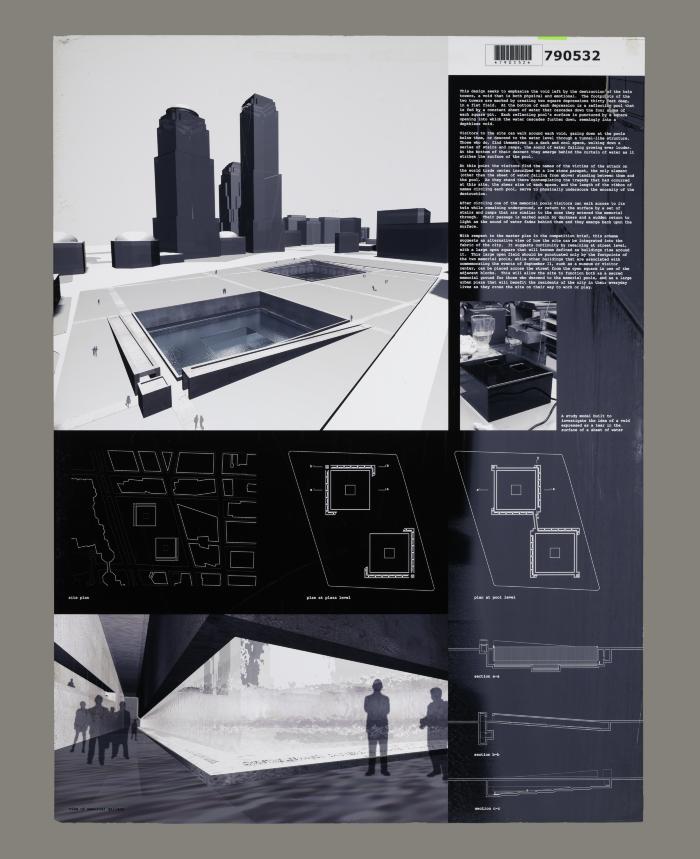
The World Trade Center Site Memorial Competition was administered by the Lower Manhattan Development Corporation (LMDC), the entity established in November 2001 to help plan and coordinate the rebuilding and revitalization of lower Manhattan, defined as everything on or south of Houston Street. The design competition for a memorial to the victims of the 9/11 terror attacks was launched in 2003, resulting in the winning choice of "Reflecting Absence" by Michael Arad and Peter Walker, which was announced in early 2004. In 2007, the Museum acquired a large collection of materials related to the competition including 5,201 of the original qualifying entries. Before kicking off the project to digitize and catalog these submissions, I conducted research to learn as much as I could about the LMDC, the Design Competition, and their formative connection to the Museum. The Wayback Machine, a digital archive that preserves copies of defunct websites, made this process much easier. I was able to view the website created for the competition by the LMDC, which is no longer available. One objective of our current grant is to meet and augment the level of access to the 2003-era competition entries once offered through this site.
Brief History of the LMDC and the Competition
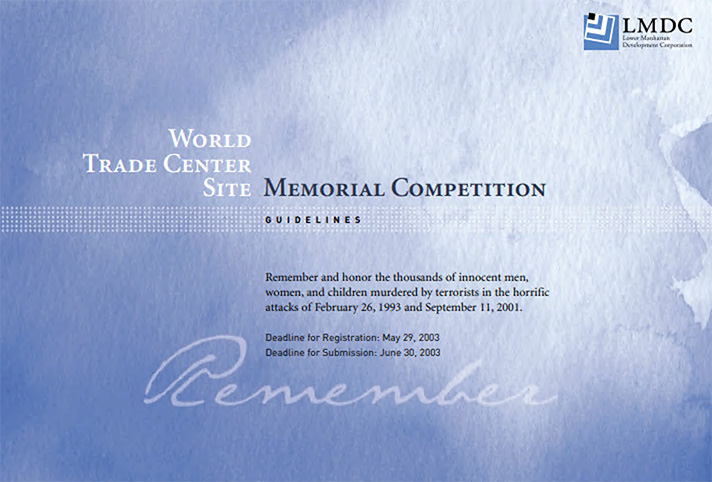
The LMDC is a joint New York State-City corporation created by Governor George E. Pataki and Mayor Rudolph W. Giuliani two months after the 9/11 attacks. Its intent was to recover, rebuild, and revitalize lower Manhattan. In April 2003, the LMDC initiated the competition to select a design for the memorial that would commemorate the nearly 3,000 men, women, and children killed. Anyone, anywhere in the world, could take part if they were 18 years of age or older. The competition attracted people across six continents, from 63 nations and 49 states, with 13,683 registrants and 5,201 qualifying submitted designs. Participants were asked to honor the lives lost on 9/11 in New York City, Washington, DC, Shanksville, PA, and in the February 26, 1993 attack on the World Trade Center. Competitors were also asked to submit design concepts consistent with the Memorial Mission Statement and Program which had been developed by 9/11 family members, lower Manhattan residents, survivors, first responders, arts and architecture professionals, and community leaders: Remember and honor the thousands of innocent men, women, and children murdered by terrorists in the horrific attacks of February 26, 1993, and September 11, 2001. Respect this place made sacred through tragic loss. Recognize the endurance of those who survived, the courage of those who risked their lives to save others, and the compassion of all who supported us in our darkest hours. May the lives remembered, the deeds recognized, and the spirit reawakened be eternal beacons, which reaffirm respect for life, strengthen our resolve to preserve freedom, and inspire an end to hatred, ignorance and intolerance.
Logistics of the Project
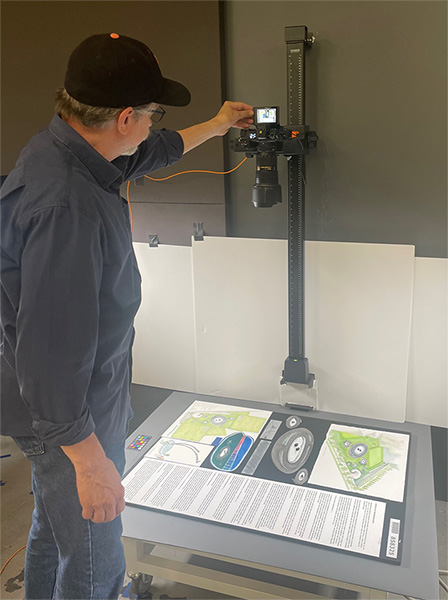
Having some prior experience with digitizing collections, I was eager to create a workflow for photographing the competition entries, which were submitted as presentation boards on 30” x 40” foam core. Understanding the material nature of the design boards and how to properly handle and manage their large volume were the initial project challenges. The first step with each board entails its careful removal from a plastic sleeve secured with tape that dates from the competition. I then organize a subset of boards for photography. Michael Hnatov, a professional photographer, has been working with the Museum for many years. He spends two days per week photographing the boards and processing the digital images, averaging around 140 boards per week.
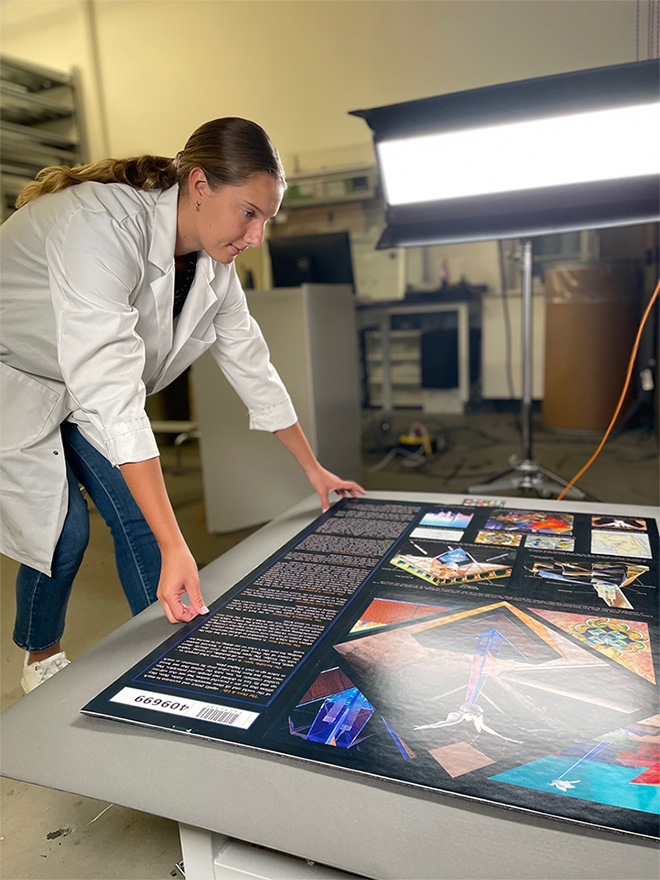
To facilitate photography, I perform the role of art handler, placing the individual boards on the copy stand, and record the title of each design if it has one. This is a new piece of data that will be added to the object’s specific catalog record, representing information that the previous competition website omitted. After each photography session, I work with the Museum’s conservation team to survey each board’s condition. They use a specially created form to document the object’s overall condition and whether immediate treatment or future conservation are needed. This data helps our conservators identify preservation priorities and plan future work. Stable boards then are placed in a new, fitted polyethylene sleeve to protect them from dust and safeguard them for their return to storage. Approximately 5% of the boards will require conservation treatment before they can be bagged. With support from the Leon Levy Foundation, the Museum purchased new storage cabinets designed for the entire collection’s improved storage.
To date, I have reviewed approximately 80% of the collection and have been very inspired by the enthusiasm of the submitters as well as the variety of their designs. Stay tuned for a future post where I will share some of the entries that I have found especially compelling.
By Samantha Spiller, Shelby White & Leon Levy Collections Technician
Previous Post
Ferry Captain Answers Call for "All Available Boats"
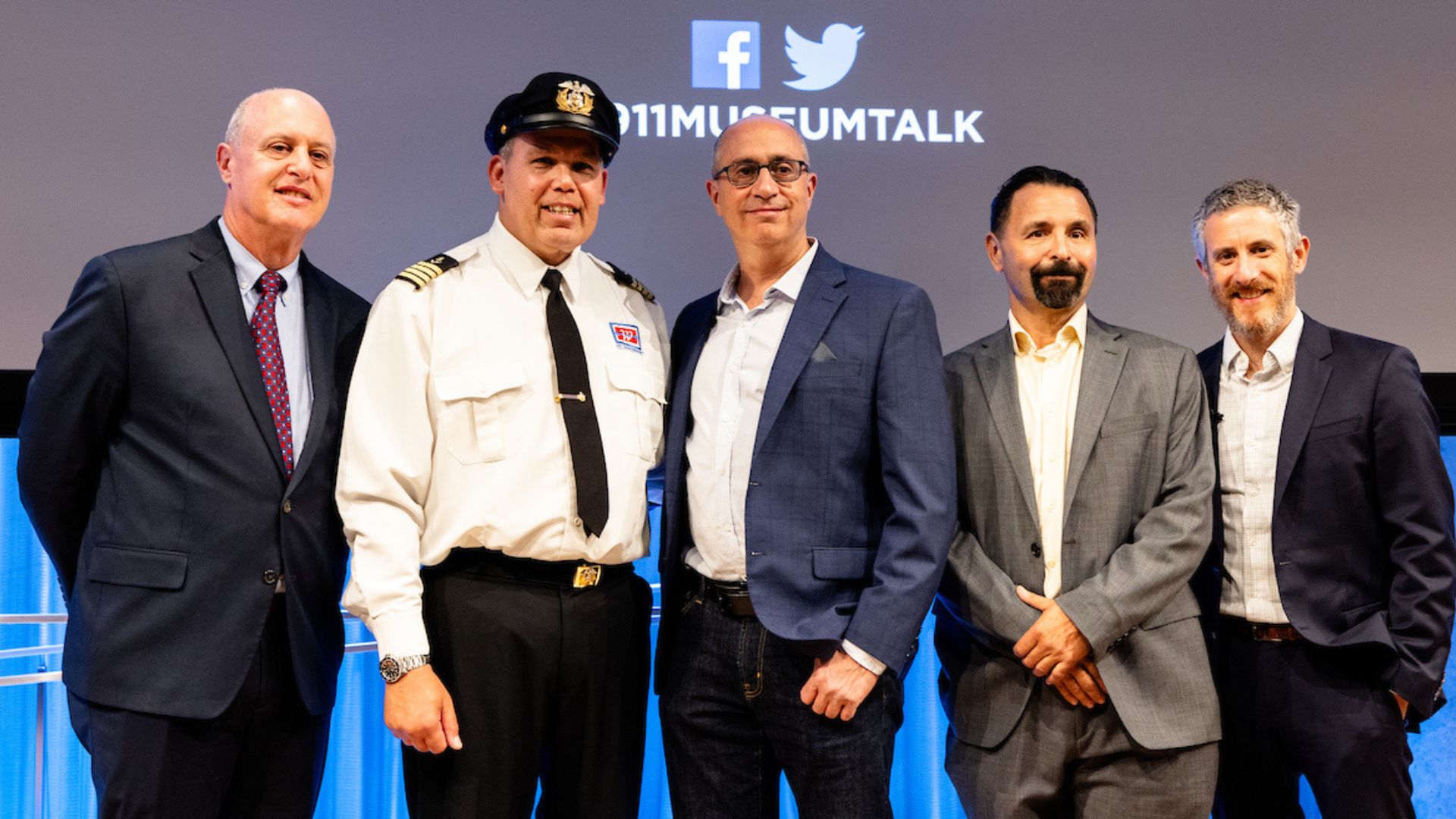
Richard Thornton is a NY Waterway Captain who participated in the largest waterborne evacuation in American history, when an estimated 300,000 to 500,000 people were transported to safety on 9/11.
Next Post
Introducing "This History is My History"
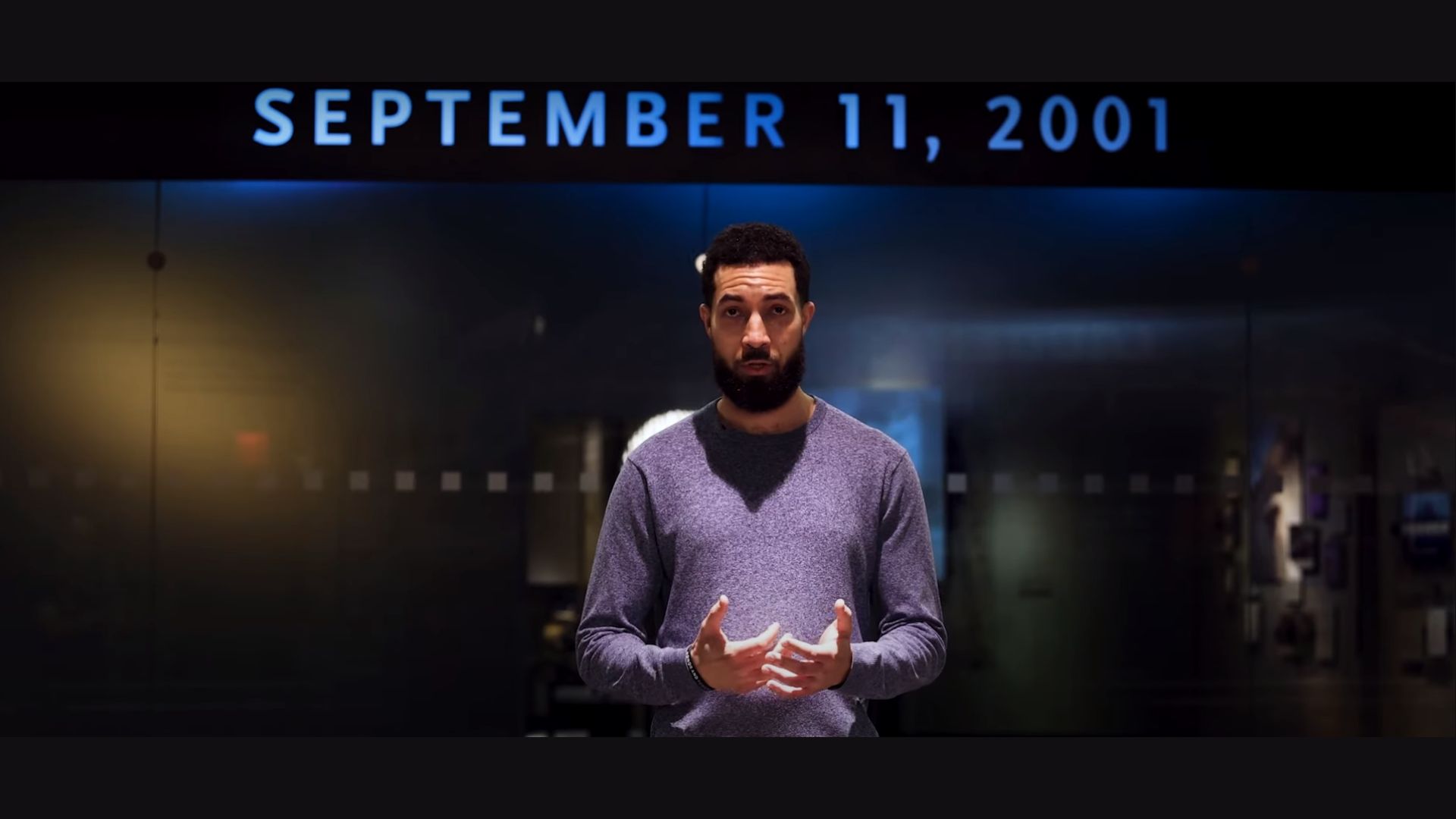
Coinciding with Black History Month 2024, we launched a special short film exploring the impact of 9/11 and the unprecedented response on the Black community. The film is the first in a series designed to look at lesser known aspects of the 9/11 narrative and legacy.